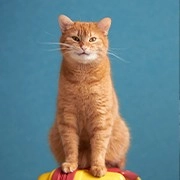Cat Safe

Have you ever placed a bright and fresh bouquet on your table, only to see your curious cat sniffing, tapping, or even chewing the petals? We all love bringing flowers into our homes, but many common plants can quietly put our cats at risk.
Today, we walk through the flowers that are toxic to cats so we can keep our living spaces safe, warm, and beautiful.
Lilies
Lilies are one of the most dangerous flowers for cats. Every part of the plant—petals, leaves, stems, and even the tiny pollen—can harm them. Even a small amount may lead to nausea, low energy, loss of appetite, or serious kidney problems. Because the risk is extremely high, many cat families completely avoid lilies at home.
Tulips
Tulips may look gentle, but their bulbs contain substances that can upset a cat’s system. If eaten, cats may drool, feel nauseous, or have loose stools. Some may seem tired or less responsive. In more serious cases, deeper organs may be affected. If we enjoy tulips, keeping them far away from our cats is the safest choice.
Azaleas
Azaleas are colorful and charming, but their leaves and flowers are toxic to cats. Chewing even a small amount may cause nausea, breathing difficulty, or weak energy. If the situation worsens, a cat may faint. Because cats are natural explorers, these plants should be placed outdoors or somewhere far from curious paws.
Daffodils
Daffodils brighten up spring decorating, but their bulbs can cause serious discomfort to cats. After chewing them, cats may show signs like queasiness, stomach pain, or shaking. In severe reactions, their nerve system may be affected. These plants should always stay out of reach, especially for cats that love digging in soil.
Nerium Oleander
Oleander is beautiful but extremely toxic. Every part of the plant carries harmful substances. Cats that chew it may feel nauseous, have strong stomach discomfort, or show irregular heart rhythms. In severe cases, the outcome may be life-threatening. With cats at home, oleander should not be kept indoors.

Pothos (Golden Pothos)
Pothos grows easily and looks clean and modern, but its leaves contain tiny crystals that irritate a cat’s mouth. Chewing it may cause drooling, nausea, or difficulty swallowing. While its toxicity is milder than lilies, large amounts can still cause issues. If we enjoy pothos, placing it high and out of reach is important.
Periwinkle
Periwinkle’s simple and bright look hides toxic compounds that affect cats. After chewing it, cats may feel nauseous, have loose stools, or experience a drop in immune system cells. If the reaction becomes severe, deeper internal systems may be affected. Because of the risk, it’s better not to keep periwinkle indoors.
Hydrangeas
Hydrangeas are popular for their big, soft blooms, but they also contain substances that upset a cat’s stomach. Eating them can cause stomach upset, loose stools, or general weakness. In stronger reactions, breathing may become more difficult. If we keep hydrangeas, they should always be placed where cats cannot reach.
Chrysanthemums
Chrysanthemums contain natural compounds that may make cats sick. Chewing the leaves or flowers may cause drooling, nausea, or stomach discomfort. In more serious cases, a cat’s system may struggle to process the toxins. When using chrysanthemums as home decor, we need extra caution.
Hyacinths
Hyacinths smell wonderful, but their bulbs are harmful when eaten. Cats may feel nausea, lose their appetite, or have stomach discomfort. If the reaction worsens, deeper organs may be affected. Because many cats love digging in flower pots, potted hyacinths should always be kept out of their reach.
Safe Flower Choices
The good news, Lykkers, is that we don’t need to give up having plants at home. There are plenty of safe options such as orchids, begonias, or many kinds of succulents. These plants help us add color and life to our rooms without putting our cats at risk. When in doubt, checking plant safety before bringing a new one home is always the best habit.
Final Thoughts
Lykkers, we all want our homes to feel warm, beautiful, and safe for our cats. By choosing the right flowers, we protect them from hidden risks and build a space where they can explore freely. If your cat ever chews a dangerous plant, please contact a vet right away—quick action matters.
We are growing together as cat families, and by learning these details, we create safer, happier homes where our beloved cats can enjoy every day with us.
Plants That Are Toxic to Cats!!
Video by Jackson Galaxy

 · Animal Team
· Animal Team